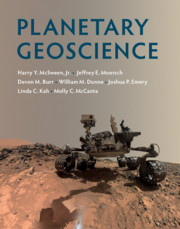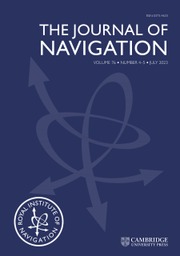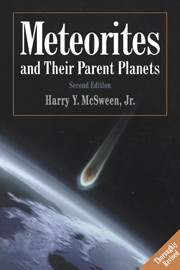Planetary Geoscience
For many years, planetary science has been taught as part of the astronomy curriculum, from a very physics-based perspective, and from the framework of a tour of the Solar System - body by body. Over the past decades, however, spacecraft exploration and related laboratory research on extraterrestrial materials have given us a new understanding of planets and how they are shaped by geological processes. Based on a course taught at the University of Tennessee, Knoxville, this is the first textbook to focus on geologic processes, adopting a comparative approach that demonstrates the similarities and differences between planets, and the reasons for these. Profusely illustrated, and with a wealth of pedagogical features, this book provides an ideal capstone course for geoscience majors - bringing together aspects of mineralogy, petrology, geochemistry, volcanology, sedimentology, geomorphology, tectonics, geophysics and remote sensing.
- Focuses on geological processes, adopting a comparative approach that demonstrates the similarities and differences between planets, and the reasons for these
- Provides an ideal capstone course for geoscience majors, bringing together aspects of mineralogy, petrology, geochemistry, volcanology, sedimentology, geomorphology, tectonics, geophysics and remote sensing
- Includes chapter summaries providing a quick review of basic concepts and important relations; sets of questions to help students digest and synthesize the topics covered; lists of further reading providing students with additional and more detailed coverage of the subject and noting why they are significant; and a glossary of terms
Reviews & endorsements
'Planetary Geoscience provides a comprehensive overview of what Earthlings know about the geology, geophysics, and geochemistry of solid worlds beyond Earth, from stardust to Venus. It clearly presents key concepts with a combination of beautiful illustrations, well-written text, and only essential equations. This is probably the best introductory planetary textbook for geoscience majors.' Alfred McEwen, University of Arizona
'The first comprehensive textbook on the geological processes that have shaped the extraordinary diversity of planetary and other bodies in the Solar System. With accessible prose and fine illustrations, this will be essential reading for undergraduate courses and a rich resource for readers wanting an up-to-date overview of the latest insights into our neighborhood in space.' Sanjeev Gupta, Imperial College London
'Planetary Geoscience is at the vanguard in showing how Earth science and planetary science are forever linked by a diversity of processes giving rise to their similarities and differences, with applications almost certainly extending everywhere that planets are found.' Richard Binzel, Massachusetts Institute of Technology
'The book is profusely illustrated with full color diagrams and photographic renderings of many geochemical and geophysical particulars. Each chapter concludes with key references and study questions. Overall, this work provides a good and very up-to-date account, from acknowledged experts, of how traditional ways of doing geology are now being extended to understand a diverse array of bodies throughout the solar system.' B. M. Simonson, Choice
'Excellent coverage of all topics.' Alan Benimoff, College of Staten Island CUNY
Product details
July 2019Adobe eBook Reader
9781108583244
0 pages
148 b/w illus. 152 colour illus.
This ISBN is for an eBook version which is distributed on our behalf by a third party.
Table of Contents
- Preface
- 1. Exploring the Solar System
- 2. Toolkits for the planetary geoscientist: imaging and spectroscopy
- 3. More toolkits for the planetary geoscientist: chronology, mapping, geophysics, and laboratory analysis
- 4. Solar System raw materials
- 5. Assembling planetesimals and planets
- 6. Planetary heating and differential
- 7. Unseen planetary interiors
- 8. Planetary geodynamics
- 9. Planetary structures and tectonics
- 10. Planetary igneous activity
- 11. Impact cratering as a geologic process
- 12. Planetary atmospheres, oceans, and ices
- 13. Planetary Aeolian processes and landforms
- 14. Planetary fluvial and lacustrine landforms: products of liquid flow
- 15. Physical and chemical changes: weathering, sedimentology, metamorphism, and mass wasting
- 16. Astrobiology: a planetary perspective on life
- 17. Integrated planetary geoscience: a case study (Mars)
- Epilogue: geologic processes in other Solar Systems?
- Glossary
- Index.










